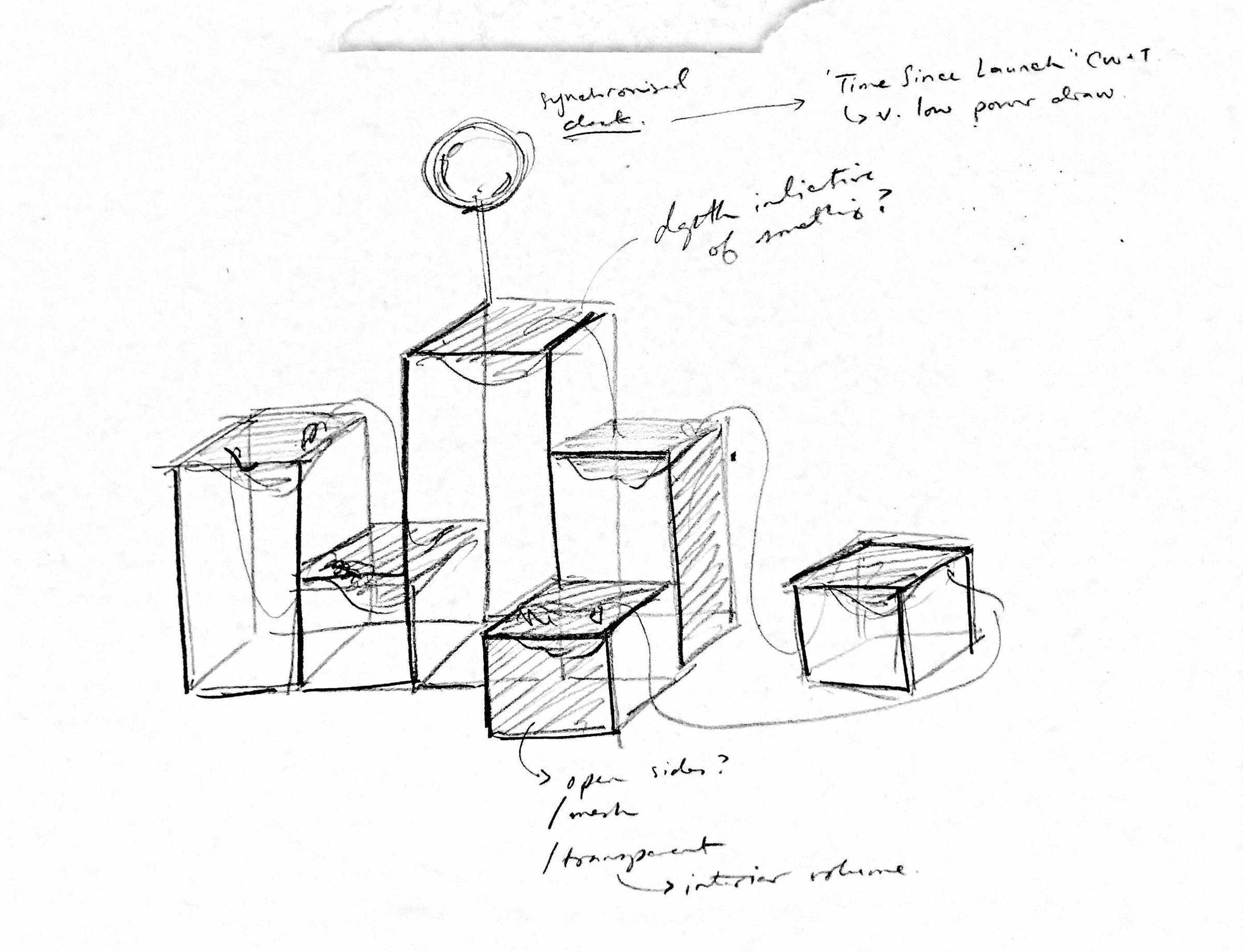This ‘studio narrative’ — essentially a reflection on what’s been happening in my studio, non-classwork practise — was written for my Research and Creation class.
For much of the semester my studio practise felt split between thinking abstractly and making figuratively. At this point a few resonant themes and concepts from my research are emerging — which is encouraging! — that I’m hoping to bring these two sides more into relation with eachother. The themes are:

 the shell prepared for casting aluminum eels
the shell prepared for casting aluminum eels
I wanted to continue with my research into pentacell batteries made of saltwater, copper and aluminum, and incorporate it into an installation. I spent quite a bit of time in the sculpture studio preparing to cast small, semi-representation eels in aluminum to create one of the needed components. As I went, I came to think of it as a hands-on, tactile version of an eel creation myth. I’m still not sure how that may feature in the work, if my experience translated as a narrative, results in a performance, concept, or an entirely different artifact.
 wireframe eel trap
wireframe eel trap
I also created a metal wireframe eel trap midway through that has unexpectedly connected with my research into fields. I made it, too, because it felt like I had been thinking about it for forever, and it needed to become a physical thing. Having it in the space let me play further with its connections and interpretations: I hooked it up as a capacitive touch sensor and it became even more of a sensing body with presence. The form itself is reminiscent of electromagnetic field diagrams, as David pointed out. Amanda also said that, were I to follow my initial intentions and weave it with wire, I could create a Faraday cage — trapping EMF signals / changes.
Electromagnetism is something I’ve been trying to understand — in part through these material explorations and projects. I feel like I’ve been exploring the very elemental/elementary levels of computing, which is electricity. Even back in the summertime, visiting the Alexander Graham Bell Museum I was fascinated with his inventions, particularly his ‘photophone’, which transduced sound into light into sound. I didn’t really understand but wanted to. And as I continue learning about electricity and computing, the more I learn about how embedded in, linked to, and originating from nature it really is, in ways both functional and poetic. The electromagnetic field being one aspect — it’s literally all around us, influenced by things we do and make, but it’s invisible like the air we breath. I made a (dysfunctional) set of dowsing rods that would sense EMF with the help of an amplifier. And in some ways, my drawings that are like diagrams are trying to sense out a way of understanding this, too.
Tim Ingold’s concept of lines have also been influential. The eels are a line, the cables, the wires. A line links two points or more; a network is made of up lines, connections between nodes. Ingold also conceives of a line as being a connection between people — literally, as when he talks about Matisse’s Dance where the lines in the bodies are knotted together at the hands, where “hands are the means of togetherness”. I return again to this notion of technology as being something that is meant to connect us — with eachother, with knowledge, with environment — and yet feels like it’s failed. (Although maybe something to consider further is connection vs. interface, which might refer instead to influencing and interacting with the other end but with some amount of distance, some kind of membrane always present.) Lines created and entangled by our attempts to cling to oneanother, which form what he calls, a meshwork.

The metal trap’s lines indicate a form, with a volume and surface, but only in outline. I originally intended to ‘fill’ in the surface through woven wires, but found it was maybe more interesting in how it instead implied a volume, without having a skin. It reminded me immediately of working in 3D software, where forms are in most cases defined only by a surface, without having actual substance or density, and are computed as a mesh, which are viewed in a ‘wireframe’ mode. The trap is a wireframe, irl. I iterated on the form using a VR program to create 3D models, which I then piled up and draped a simulated cloth overtop of. The veil or shroud, which I’ve touched on before, in this case was also a kind of skinning or mapping-onto of the form underneath. An imposition and then distortion of another grid.

I was again thinking about raytracing, which is a computer graphics technique(?) that simulates how light and forms interplay. Interestingly, Albrecht Dürer is credited with its invention. It works “by tracing a path from an imaginary eye through each pixel in a virtual screen[’s grid], and calculating the color of the object visible through it.” (Wikipedia, Ray Tracing (Graphics)) Therefor, areas of objects out of view of the camera don’t need to be rendered. While this is similar to the way photography functions, perhaps because I’ve seen this other side while operating in the conceived 3D space, that the creation of the (partial) illusion is of interest to me. The grid is a way for the computer to perceive, but in my cloth simulation it also obscures.
I feel like I’ve been able to draw some of these threads more closely together, but there’s still a big gap between how I’m seeing/approaching the work and how an outside viewer would perceive it. Not to mention, nothing’s finished yet!
 2024-03-23 Log
2024-03-23 Log